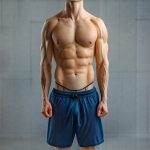As we age, maintaining physical function becomes increasingly important for overall health, independence, and quality of life. However, traditional exercise routines often focus on high-intensity workouts that can be challenging – even unsafe – for older adults. There’s a growing recognition that movement isn’t just about burning calories or building muscle; it’s fundamentally about connection—connecting with our bodies, connecting to the present moment, and cultivating a sense of joyful embodied experience. This shift in perspective necessitates routines designed not only to improve physical capacity but also to foster mindful awareness and intrinsic motivation.
The key is to move beyond prescriptive exercise programs and embrace what we call “flow-conscious” physical routines. These aren’t about achieving specific fitness goals so much as they are about cultivating a state of flow – that feeling of being fully present, engaged, and absorbed in the movement itself. Flow states have been linked to numerous benefits, including reduced stress, improved mood, enhanced cognitive function, and increased creativity. For older adults, this approach can transform physical activity from a chore into a deeply rewarding experience, promoting sustained participation and long-term well-being. This article will explore how to design and implement flow-conscious routines that are safe, adaptable, and genuinely enjoyable for individuals of all abilities.
Understanding Flow in Movement
Flow, as defined by psychologist Mihály Csíkszentmihályi, is a state of complete absorption in an activity, where the challenge perfectly matches skill level. In the context of physical movement, this means finding activities that are neither too easy (leading to boredom) nor too difficult (causing anxiety). It’s about striking a sweet spot where you feel challenged but capable, engaged but not overwhelmed. This isn’t necessarily about complex choreography or athletic feats; it can be as simple as walking with mindful attention, gently swaying to music, or exploring the range of motion in your body. Understanding how best meal patterns impact energy levels is also key for sustained flow.
- Intrinsic Motivation: Flow-conscious routines prioritize intrinsic motivation – doing something for the inherent enjoyment rather than external rewards like weight loss or muscle gain. This is crucial for long-term adherence because it shifts the focus from obligation to pleasure.
- Mindful Attention: Cultivating mindful attention is central to experiencing flow. This involves paying close attention to the sensations in your body, the rhythm of your breath, and the environment around you, without judgment or distraction.
- Adaptability & Self-Compassion: Recognizing that our bodies change over time and adapting routines accordingly is vital. Flow-conscious movement embraces self-compassion – allowing yourself to modify exercises, rest when needed, and celebrate even small accomplishments.
Ultimately, flow in movement isn’t about how you move but how you relate to the movement. It’s about cultivating a sense of playful curiosity, embodied presence, and joyful exploration. When movement becomes an opportunity for self-discovery and mindful connection, it transcends mere exercise and becomes a pathway to vibrant health and well-being. Proper hydration is also important, as discussed in urology diet tips.
Designing Routines for Older Adults
Creating flow-conscious routines for older adults requires careful consideration of individual needs, abilities, and preferences. There isn’t a one-size-fits-all approach; routines should be tailored to each person’s unique circumstances. A good starting point is to focus on functional movements – those that mimic everyday activities like walking, bending, lifting, and reaching. These movements not only improve physical function but also enhance independence and reduce the risk of falls.
Safety is paramount. Routines should begin with a gentle warm-up to prepare the muscles and joints for movement. This might include light cardio (such as marching in place or arm circles) followed by dynamic stretching (moving through a range of motion). As routines progress, encourage participants to listen to their bodies and modify exercises as needed. Avoid pushing through pain or discomfort. Cool-down periods with static stretching can help reduce muscle soreness and improve flexibility.
Consider incorporating elements that promote sensory awareness and mindful engagement. For example:
* Music: Using music with a comfortable tempo can enhance enjoyment and rhythm.
* Nature: Exercising outdoors, if possible, provides additional benefits from fresh air and natural surroundings.
* Visualization: Guiding participants to visualize themselves moving with ease and grace can improve body awareness and confidence.
Incorporating Mindful Movement Principles
Mindful movement isn’t about achieving perfect form or following a rigid set of instructions; it’s about cultivating presence and awareness during the activity. Here are some principles to incorporate into routines:
- Breath Awareness: Encourage participants to pay attention to their breath, using it as an anchor for mindful focus. Deep, slow breaths can help calm the nervous system and enhance relaxation.
- Body Scan: Before beginning a movement, invite participants to scan their bodies, noticing any areas of tension or discomfort. This helps them become more attuned to their physical sensations.
- Slow & Deliberate Movements: Emphasize slow, deliberate movements rather than rushing through exercises. This allows participants to fully experience the sensation of movement and improves body awareness. For those with urgency issues, comfort sitting patterns can be integrated into rest periods.
Gentle Strength Training for Functional Fitness
Strength training is essential for maintaining muscle mass, bone density, and functional independence. However, traditional weightlifting can be intimidating or inaccessible for older adults. Focus on gentle strength training exercises that use bodyweight or light resistance:
- Chair Squats: Stand in front of a chair with your feet hip-width apart. Slowly lower yourself as if you’re going to sit down, but stop just before your buttocks touch the seat. Return to standing position. Repeat 8-12 times.
- Wall Push-Ups: Stand facing a wall, arms extended and hands shoulder-width apart. Lean towards the wall, bending your elbows. Then push back to the starting position. Repeat 8-12 times.
- Bicep Curls with Light Weights (or resistance bands): Use light dumbbells or resistance bands to perform bicep curls. Focus on controlled movements and avoid lifting too much weight.
Balance & Coordination Exercises for Fall Prevention
Falls are a major concern for older adults, but balance and coordination can be improved through targeted exercises:
- Single Leg Stand: Hold onto a chair or wall for support. Lift one leg off the ground and try to maintain your balance for 10-30 seconds. Repeat on the other side.
- Heel-to-Toe Walking: Walk in a straight line, placing the heel of one foot directly in front of the toes of the other foot. This challenges your balance and coordination.
- Tai Chi or Yoga: These ancient practices incorporate slow, flowing movements that promote balance, flexibility, and mindful awareness. They are excellent choices for older adults seeking to improve their physical and mental well-being. A minimalist supplement routine can also support overall health.
In conclusion, flow-conscious physical routines offer a powerful alternative to traditional exercise programs for older adults. By prioritizing intrinsic motivation, mindful attention, and adaptability, these routines can transform movement into a deeply rewarding experience that promotes sustained participation, improved health, and enhanced quality of life. It’s about finding joy in the journey, celebrating small victories, and embracing the wisdom of our changing bodies.





















